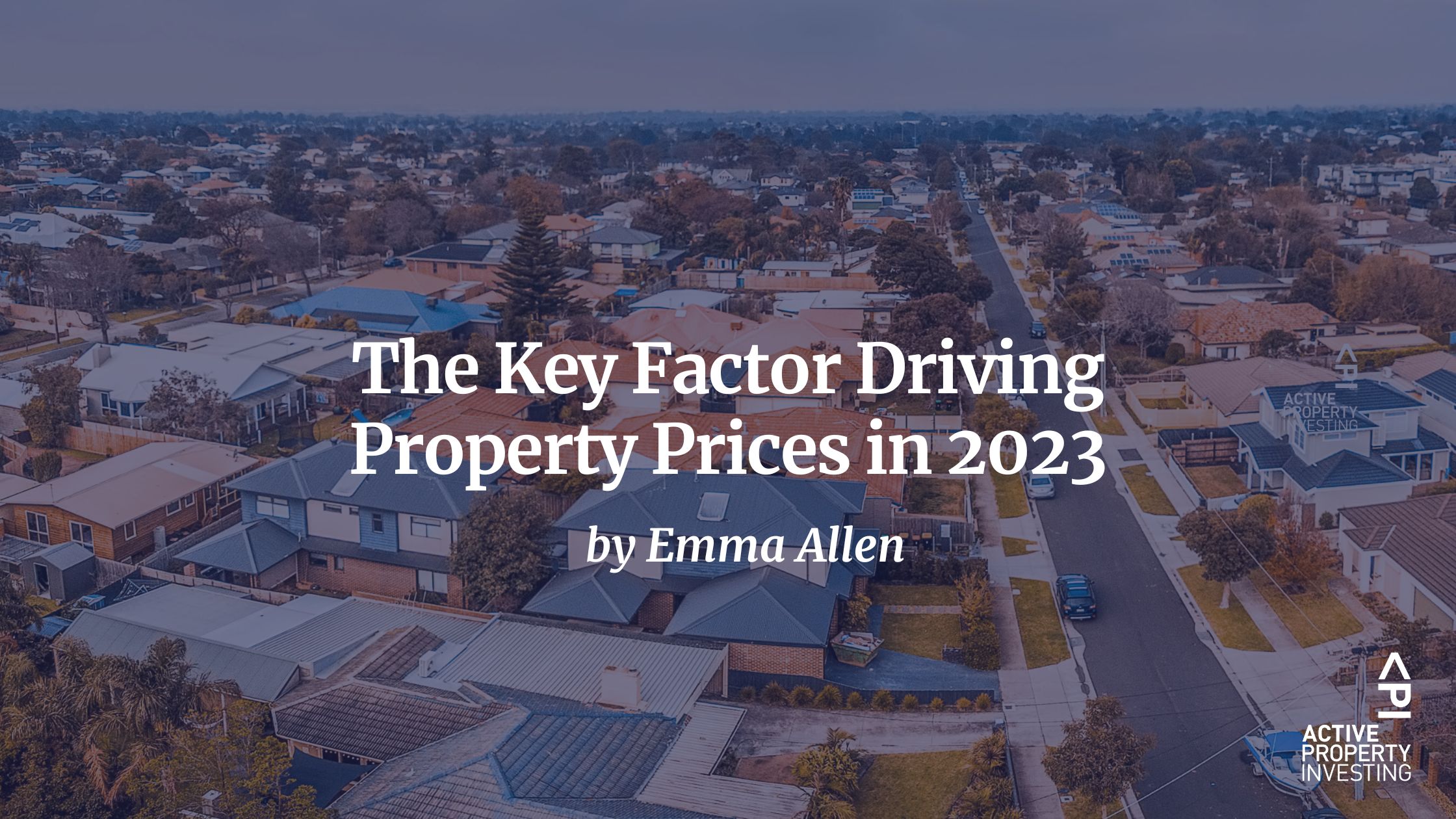What an interesting year it has been in property. As interest rates rise, our clients were understandably curious and concerned about the implications for their financial well-being and investment. But we saw that despite the consecutive interest rate rises, the property market trends have done the opposite of what was expected. So what was it that drove Australian property prices up when it was widely anticipated that values would decline?
A recent Real Estate Business article highlighted that there was one standout factor that has been driving 2023 values. Dr. Peng Yew Wong, a senior lecturer at RMIT’s School of Property, Construction, and Project Management, said that “the notable surge in prices across the nation conveys a distinct message: the influence of supply shortages has become so pronounced that it significantly surpasses other factors.”

While property prices took a dip from April 2022 to February 2023 due to rising interest rates, a rapid rebound has caught many by surprise. As per CoreLogic’s data in September 2023, prices have already reclaimed roughly half of the earlier decline, which saw national home values drop by 9.1 percent between April 2022 and February 2023.
As Dr Wong noted: “The housing market behaved quite the opposite way from the market expectations in the midst of high inflation and high mortgage rates.”
“Instead of the much-anticipated downturn caused by high cost of living and high mortgage repayments, house prices continue to perform strongly – consistently registering positive growth since the beginning of 2023. Australian house prices are expected to hit a new record high in the final quarter of 2023,” he said.
While numerous market factors continue to exert pressure on Australian property prices, their collective impact is eclipsed by the substantial dominance of supply shortages in the current pricing landscape. “This year, the key driver for the housing market is undoubtedly the shortage in housing supply,” Dr Wong stated.
“The National Housing Finance and Investment Corporation (NHFIC) estimated that household demand in Australia will grow from 10.7 million to around 12.6 million in 2033 and showed housing supply is already in a shortfall condition, with the supply to household formation balance to be a cumulative negative in the territory of a -106,300 balance over the next five years”.
 Dr. Wong acknowledged the complexity of the challenge at hand, emphasising that there is no instant remedy available. However, he highlighted two primary impediments where governmental action could expedite the creation of new homes. The first, Dr. Wong pointed out, is addressing skills shortages in the construction industry. The second hurdle, and one that he suggested is relatively more manageable, is reducing planning delays. Dr. Wong urged state and local governments to streamline their approval processes, eliminating what he termed “non-productive bureaucracy delays.”
Dr. Wong acknowledged the complexity of the challenge at hand, emphasising that there is no instant remedy available. However, he highlighted two primary impediments where governmental action could expedite the creation of new homes. The first, Dr. Wong pointed out, is addressing skills shortages in the construction industry. The second hurdle, and one that he suggested is relatively more manageable, is reducing planning delays. Dr. Wong urged state and local governments to streamline their approval processes, eliminating what he termed “non-productive bureaucracy delays.”
At Active Property Investing (API) we specialise in the research and selection of locations and new home builds because we know that Australia’s shortage must be met with high quality homes designed for practicality and appeal. “Sometimes people are concerned about building, but we are focused on making sure that the right house is built in the right location, with the right partnerships.” said Emma Allen, Director of API.
“House prices shall continue to go from strength to strength into 2024–25 in the midst of high inflationary pressure, due mainly to the housing supply shortage,” he said. So with this in mind, it is an opportune time for investors and those with long-term plans of wealth creation to capitalise on the end of the 2023 market.
To find out how you can get started or about more API opportunities, click START HERE
Source: The property price driver outweighing all others in 2023, REB click here

